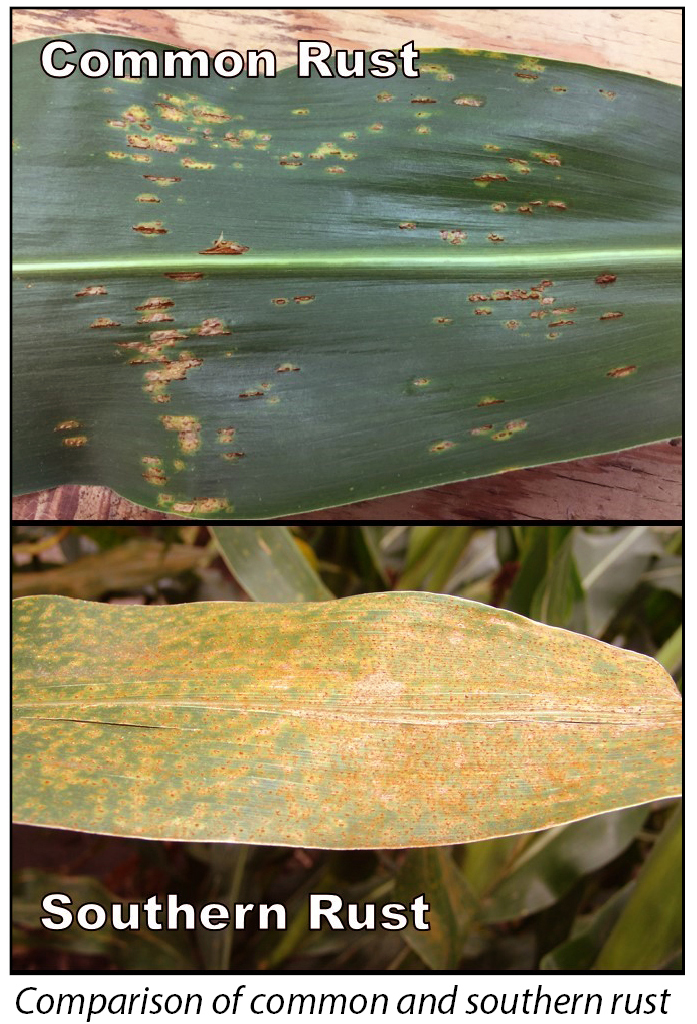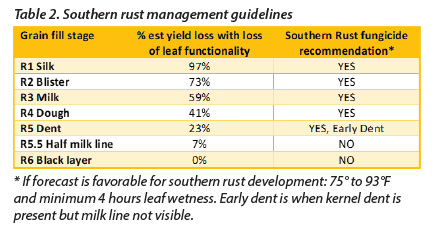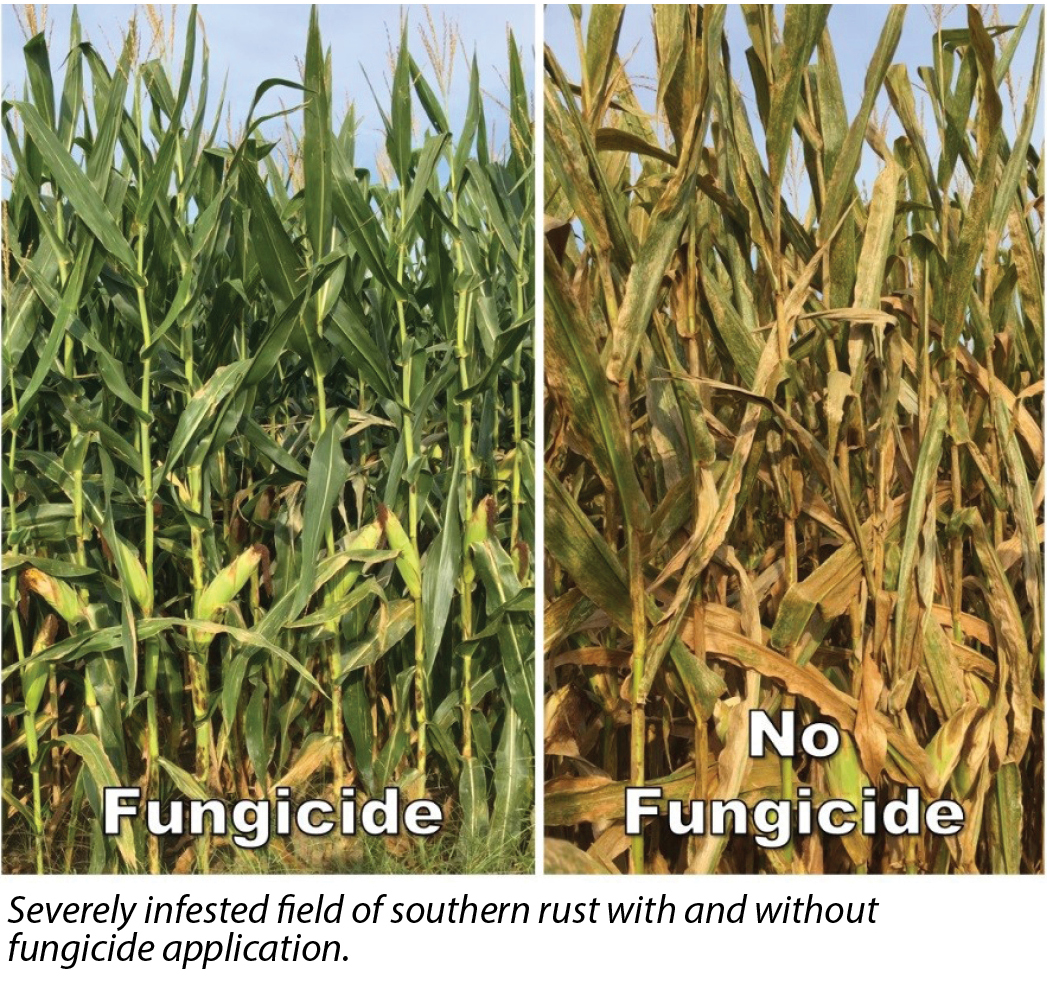Each year presents conditions that are favorable for different leaf diseases. Even if some common diseases aren’t as prevalent in a given year, it’s still important to monitor plant health throughout the summer and be aware of diseases that could impact yield potential.
One disease that deserves particular attention this year is southern rust, which has been found progressing north into the central Corn Belt earlier than normal. Southern rust can be easily mistaken for its less aggressive relative, common rust. This issue of Between the Rows will provide information to help identify and manage southern rust.
Southern Rust
Southern rust is caused by the fungal pathogen Puccina polysora. It doesn’t overwinter in the Midwest, but each year spores are carried north on weather systems originating in the southern United States. Southern rust favors hot temperatures (morning low of 75°F and daytime highs of 93°F) and at least 4 hours of leaf wetness. It can continue to spread when daytime highs exceed 100 degrees, but at a slower rate.

Given favorable conditions, southern rust will spread quickly, and severe infestations can impact yield potential and late season stalk quality. Southern rust has been confirmed in the central Corn Belt this year, and a website has been established to help monitor southern rust distribution across the Midwest and South.
Symptoms – Southern rust primarily infects the upper surface of leaves, husks and stalks. Southern rust pustules are smaller and more circular than common rust, and are light cinnamon to orange in appearance. Southern rust pustules are often densely clustered as opposed to a wider distribution found with common rust. Leaf tissue surrounding the pustules will turn yellow and eventually die, and the spores darken over time.
Distinguishing between southern and common rust - Similar to southern rust, common rust does not overwinter in the Midwest, but arrives from spores that are carried north on storms from the southern United States. Common rust is not as aggressive as southern rust and poses less risk of yield loss. Therefore, distinguishing between the two rust species is important for management considerations.


Management – If southern rust is found on multiple corn plants during the early dent stage or earlier, and weather forecasts predict hot, humid conditions, treat with a fungicide. Late planted fields are often at more risk since there is a higher likelihood that infestation occurs during ear development and grain fill.

Most fungicides only provide three to four weeks of residual protection, so continue to scout fields even if they were treated earlier in the season. Refer to the Crop Protection Network corn fungicide efficacy chart for southern rust effectiveness and pre-harvest restrictions of late fungicide applications. Hybrid tolerance to southern rust varies, and relying solely on hybrid disease tolerance is not a recommended management strategy, so all hybrids should be scouted and considered for treatment.

CONCLUSION
Although not native to the Corn Belt, southern rust finds its way north each year. Southern rust is aggressive, and given the right conditions can have a great impact on yield. Scouting and correctly identifying southern rust is the key to making a best management decision for your farm. If southern rust is found in your field during early grain fill, a fungicide application is recommended to maximize yield and profit.
